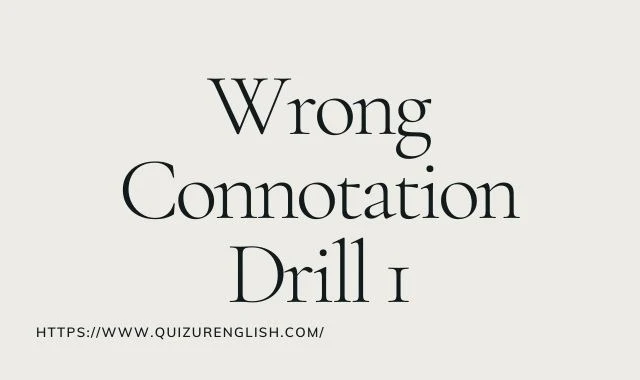Wrong Connotation Drill 1
In the realm of standardized testing, precision is paramount. Tests like the SAT, ACT, and EST are designed to gauge a student's aptitude and knowledge in various subjects. However, one often overlooked aspect of these tests is the role of connotation, and how a slight misinterpretation can lead to incorrect answers. This article delves into the concept of "wrong connotation" and its implications for test-takers.
What is Connotation?
At its core, connotation refers to the emotional or cultural associations attached to a word, as opposed to its literal dictionary definition (denotation). For instance, the word "home" might be denoted as "a place where one lives," but its connotations can include warmth, safety, and family.
The Role of Connotation in Standardized Tests
The SAT, ACT, and EST, like many standardized tests, often include questions that test a student's vocabulary and reading comprehension. Here, the connotative meaning of words can play a crucial role. A passage might use a word in a way that leans heavily on its connotative meaning, and students who focus solely on the denotative definition might miss the point entirely.
For example, if a passage describes a character as "luminous," it might not be referring to the character emitting light (denotation), but rather that the character has a radiant personality or presence (connotation).
<->
Pitfalls and Challenges
- Cultural Differences: Connotations can vary across cultures. A word that has a positive connotation in one culture might have a neutral or even negative connotation in another. International students or those from diverse cultural backgrounds might find certain questions more challenging due to these differences.
- Over-reliance on Vocabulary Drills: Many students prepare for the vocabulary sections of these tests by memorizing word lists. While this can be helpful, focusing solely on denotative meanings can leave students ill-prepared to tackle questions that hinge on connotative meanings.
- Time Pressure: Given the time constraints of these tests, students might rush through reading passages, missing subtle hints that indicate the connotative use of a word.
Tips for Navigating Connotation on Standardized Tests
- Context is Key: Always consider the broader context in which a word is used. This can provide clues about whether a word's denotative or connotative meaning is being invoked.
- Practice with Diverse Passages: During preparation, expose yourself to a wide range of reading materials, including those from different cultures and time periods. This can help attune you to varying connotations.
- Stay Calm and Re-read: If a question or passage seems confusing, take a deep breath and re-read it. Look for clues that might indicate the intended connotation of a tricky word.
Wrong Connotation Drill 1
Conclusion
In conclusion, while the SAT, ACT, and EST are rigorous tests that challenge a student's knowledge and aptitude, it's essential to remember the subtle role of connotation. By being aware of this aspect and preparing accordingly, students can avoid the pitfalls of wrong connotation and better position themselves for success.

